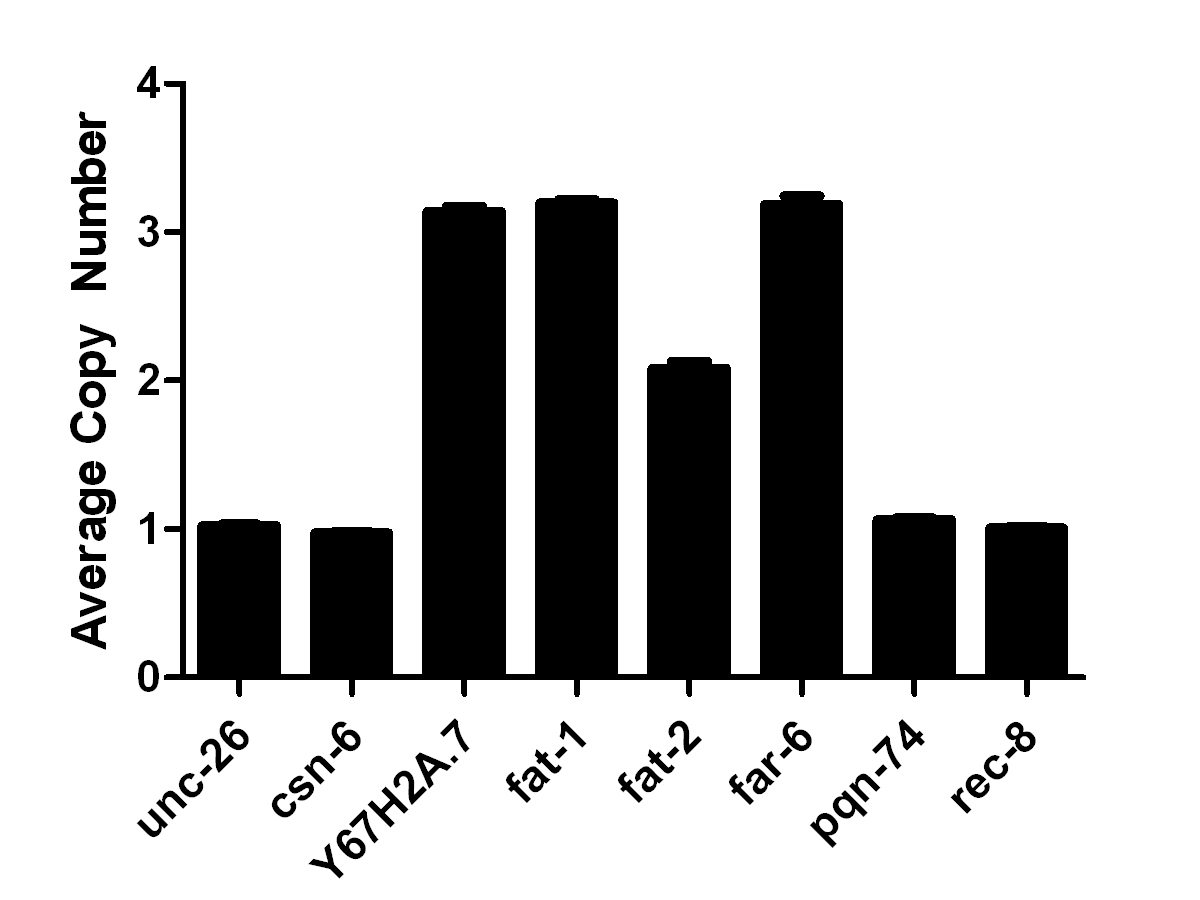1School of Molecular Biosciences, Washington State University, Pullman WA
Correspondence to: Jennifer L. Watts (jwatts@vetmed.wsu.edu)
Diets rich in omega-3 fatty acids are associated with health benefits in humans. C. elegans can synthesize all polyunsaturated fatty acids de novo and thus serves as an excellent genetic system for the determining the fundamental roles of these fatty acids in development and physiology. De novo synthesis of omega-3 fatty acids in C. elegans requires the activities of a delta-12 desaturase (FAT-2) and an omega-3 desaturase FAT-1, both of which are desaturases that are not present in humans or other mammals (Watts and Browse, 2002). The RB969 strain contains the ok873 allele, which was reported to contain a 1224 base pair deletion of DNA within the fat-2 gene. We performed gas chromatography analysis to determine the fatty acid composition of the RB969 strain. Based on previous analysis of the fat-2(wa17) allele, we expected to observe a loss of 20-carbon polyunsaturated fatty acids (PUFAs). However, we were surprised to find that the RB969 strain contained a higher abundance of PUFAs than wild type, with an increased abundance of omega-3 (n-3) PUFAs (Table 1). PCR analysis of the RB969 strain showed amplification of the expected deletion product, but also amplification of larger bands, including one corresponding to the wild type fat-2 gene. After backcrossing the strain 8 times, we were unable to obtain segregants that contained only the wild type or only the fat-2 deletion PCR products. Therefore, we hypothesized that in addition to a deletion of genomic DNA in the fat-2 gene, this genomic region may have undergone a duplication event, such that both copies of chromosome IV in RB969 worms contained a wild type as well as a deleted version of the fat-2 gene.

